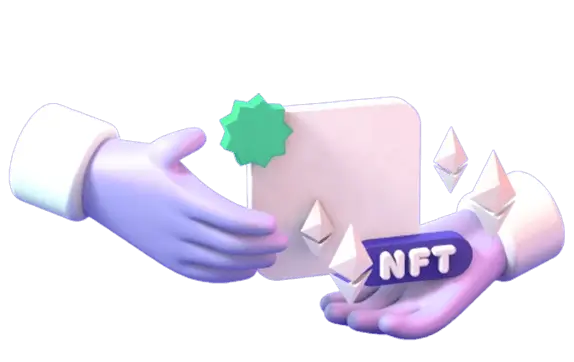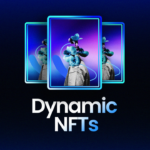
Re-roll Mechanic (NFTs)
The term “re-roll mechanic” refers to a feature commonly used in NFT (non-fungible token) projects, particularly in gaming and digital collectibles.
It allows users to exchange an existing NFT for a newly generated one with different or randomized attributes.
This concept borrows from traditional video games, where players can “re-roll” character stats, items, or outcomes in pursuit of more desirable results.
In the NFT world, this mechanic adds a layer of strategy, personalization, and gamification to the ownership experience.
Key Takeaways
- Re-roll mechanics add strategic and gamified layers to NFT ownership.
- Popular in gaming, collectibles, and generative art.
- Varying implementations affect trait rarity, market behaviour, and user satisfaction.
- Must be carefully designed to avoid undermining project integrity.
What is a Re-roll Mechanic in NFTs?
A re-roll mechanic in NFTs enables users to alter or exchange an existing NFT to obtain a new version, often with random or selectively changed attributes.
This may involve burning the original token, paying a fee, or interacting with a smart contract that performs the re-roll logic. The newly generated NFT is typically based on a randomization algorithm that aligns with the project’s design rules.
Depending on the implementation, re-rolls can be conducted entirely on-chain for transparency and security or off-chain for flexibility and scalability.
Why Projects Use Re-roll Mechanics
Projects implement re-roll mechanics for several reasons:
- Enhanced Engagement: The ability to re-roll NFTs encourages repeated interaction and participation.
- Gamification: Mimics elements of chance and reward, keeping users invested.
- Supply Control: Helps rebalance trait rarity or adjust the distribution of certain assets over time.
- Customization: Gives collectors more agency to tailor their NFTs according to aesthetic or strategic preferences.
Common Use Cases
PFP Projects (Profile Picture Projects):
Users re-roll to get rarer traits or create a more appealing avatar. This mechanic adds an element of excitement and strategy, as users weigh the potential benefits of a re-roll against the risk of losing desirable existing traits.
NFT Games:
Players may re-roll stats, weapons, or loot to optimize gameplay.
By allowing re-rolls, games empower players to customize their experience and pursue optimal builds, increasing engagement and replayability.
Generative Art:
Artists and collectors refresh modular or randomized elements to generate new visual outcomes.
This process fosters creativity and discovery, enabling unique combinations that enhance the value and appeal of each piece.
How Re-rolling Works (Step-by-Step)
- The user selects an NFT they wish to re-roll.
- They submit a transaction, often including a fee in ETH or a native token.
- The smart contract verifies eligibility and initiates the re-roll logic.
- The original NFT may be burned (destroyed) or returned to the contract.
- A new NFT is minted or reassigned to the user with new traits.
Types of Re-roll Mechanics
Burn-to-Re-roll:
This irreversible process, often referred to as “burning,” ensures the uniqueness of the new NFT and adds an element of scarcity to the ecosystem.
Trait-Specific Re-rolls:
Only certain aspects, such as background or accessory, are randomized.
This selective re-rolling allows users to retain their favorite core traits while still introducing fresh elements, striking a balance between personalization and novelty.
Limited Re-rolls:
NFTs have a cap on the number of times they can be re-rolled.
This limitation preserves the integrity of rarity within the collection and encourages users to make thoughtful decisions about when to use their re-roll opportunities.
Token-Gated Re-rolls:
Access is restricted to holders of a specific token or NFT.
This exclusivity not only rewards loyal community members but also adds value to the qualifying token or NFT, incentivizing ownership and participation.
Risks and Considerations
While re-roll mechanics offer advantages, they come with potential downsides:
- Trait Dilution: Overuse of re-rolls can lead to rarity inflation, reducing value.
- Game Theory Risks: Strategic re-rolling might undermine the original distribution design.
- Smart Contract Vulnerabilities: Poorly written contracts can be exploited.
- Cost and Environmental Impact: Re-rolls executed on Layer 1 chains like Ethereum can incur high gas fees and have a carbon footprint.
Notable Projects Using Re-roll Mechanics
- Chain Runners: Allowed re-rolling of visual traits for a fee.
- Wolf Game: Enabled players to re-roll their staked NFTs for new attribute combinations.
- RektGuy Derivatives: Included burn-to-re-roll mechanics to maintain scarcity while offering personalization. Each project puts its own twist on the mechanic, contributing to different levels of risk, reward, and strategy.
Community and Market Impacts
Secondary market volatility can arise as rarity reshuffling influences pricing dynamics.
Increased engagement is another effect, as users remain involved for longer periods, boosting overall community activity.
Additionally, liquidity receives a boost since active re-rolling leads to higher transaction volumes on marketplaces.
Limited-time or capped re-roll events can also drive fear of missing out (FOMO) and encourage more calculated buying behavior among participants.
Future Outlook
The re-roll mechanic is evolving with advancements in blockchain infrastructure:
- Layer 2 Adoption: Rollups like Optimism and Arbitrum can reduce re-roll fees and encourage experimentation.
- AI Integration: Machine learning could generate re-roll results based on user preferences or patterns.
- Modular NFT Architecture: Dynamic NFTs could support ongoing re-rolls without burning or replacing tokens.
Summary
The re-roll mechanic is a powerful tool in the NFT space that blends elements of gaming, personalization, and blockchain technology.
By allowing users to regenerate traits or entire NFTs through smart contract interactions, projects can boost engagement and provide greater utility to collectors.
Whether used in art, gaming, or profile picture collections, re-rolls offer both excitement and strategic depth, with the trade-off of potential market distortion or rarity dilution if not managed properly.
Related Terms:
FAQ
What does re-rolling mean in NFTs?
Re-rolling in NFTs refers to exchanging or modifying an NFT to receive a new version with different attributes, often randomized.
Is re-rolling permanent?
It depends on the implementation. Some re-rolls burn the original NFT, while others may allow reversible or trait-specific changes.
Do you have to pay for a re-roll?
Most NFT projects charge a fee for re-rolling, either in ETH, their native token, or by requiring the burn of a token.
Are re-roll mechanics safe?
They are generally safe if the smart contracts are audited. However, poorly designed mechanics can be vulnerable to exploits or negatively affect rarity.
Which projects use re-roll mechanics?
Notable examples include Chain Runners, Wolf Game, and RektGuy derivatives. Each uses the mechanic differently to serve their community and ecosystem.




